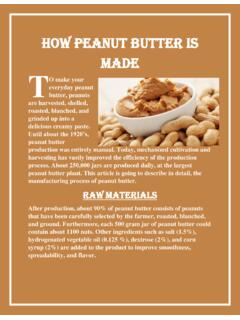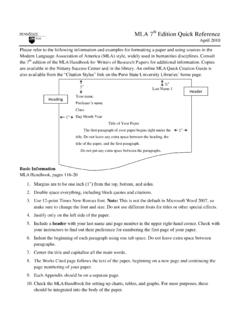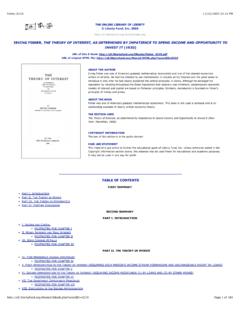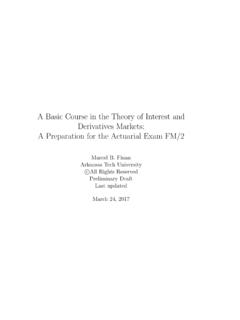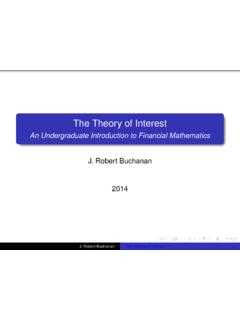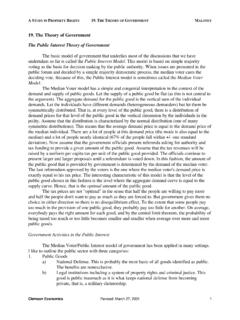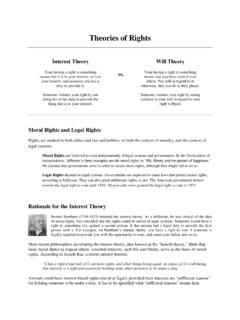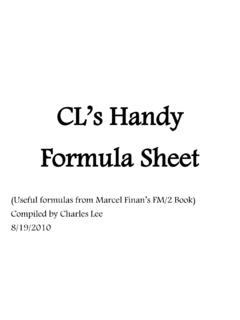Transcription of THE THEORY OF INTEREST - Sites at Penn State
1 TTTHHHEEE TTTHHHEEEOOORRRYYY OOOFFF IIINNNTTTEEERRREEESSSTTT SSSEEECCCOOONNNDDD EEEDDDIIITTTIIIOOONNN SSSTTTEEEPPPHHHEEENNN KKKEEELLLLLLIIISSSOOONNN RRREEEAAADDDIIINNNGGG NNNOOOTTTEEESSS WWWEEEDDDNNNEEESSSDDDAAAYYY,,, SSSEEEPPPTTTEEEMMMBBBEEERRR 222777,,, 222000000666 KKEELLLLIISSOONN SS RREEAADDIINNGG NNOOTTEESS TTAABBLLEE OOFF CCOONNTTEENNTTSS Chapter 1 The Measurement of The Accumulation and Amount Functions ..4 The Effective Rate of INTEREST ..4 Simple INTEREST ..4 Compound Present Value ..5 The Effective Rate of Nominal Rates of INTEREST and Discount ..6 Forces of INTEREST and Discount.
2 7 Varying INTEREST ..7 Chapter 2 Solutions of Problems in INTEREST ..8 Obtaining Numerical Results ..8 Determining Time Periods ..8 The Basic Problem ..8 Equations of Unknown Time ..9 Unknown Rate of INTEREST ..9 Chapter 3 Basic Annuities ..11 Annuity-Immediate ..11 Annuity-Due ..11 Annuity Values on Any Date ..11 Present Values More Than One Period Before the First Payment Date ..11 Accumulated Values more than one period after the last payment date ..11 Current Values between the first and last payment dates ..12 Summary ..12 Unknown Time ..12 Unknown Rate of INTEREST ..12 Varying INTEREST ..13 Chapter 4 More General Annuities.
3 14 Annuities Payable at a different frequency than INTEREST is Further Analysis of annuities payable more frequently than INTEREST is Annuity-Immediate ..14 Annuity-Due ..14 Other Considerations ..14 Continuous Basic Varying Annuities ..15 Payments varying in Arithmetic Progression ..15 Payments Varying in Geometric Progression ..16 Other Payment More General Varying Continuous Varying Annuities ..17 Chapter 5 Yield Rates ..18 - 3 - Discounted Cash Flow Analysis ..18 Uniqueness of the Yield Rate ..18 Reinvestment INTEREST Measurement of a Fund ..19 Time-Weighted Rates of INTEREST ..20 Portfolio Methods and Investment Year Chapter 6 Amortization Schedules and Sinking Funds.
4 23 Finding the Outstanding Loan Amortization Schedules ..23 Sinking Funds ..24 Varying Series of Chapter 7 Bonds and Other Securities ..26 Types of Bonds ..26 Preferred Common The Price of a Bond ..27 Premium and Valuation Between Coupon Payment Dates ..30 Determination of Yield Rates ..32 Callable Bonds ..32 Other Preferred Stock and Perpetual Bonds ..33 Common Chapter 8 Practice Short Sales ..35 Modern Financial Instruments ..35 Money Market Funds ..35 Certificates of Deposit ..36 Guaranteed Investment Contracts (GICs) ..36 Mutual Funds ..36 Mortgage Backed Securities ..36 Collateralized Mortgage Obligations.
5 37 Chapter 9 More Advanced Financial Analysis ..38 Recognition of Inflations ..38 Yield Curves ..38 Duration ..39 Immunization ..40 Matching Assets and Appendix VIII Full Immunization ..43 - 4 - Chapter 1 The Measurement of INTEREST Introduction INTEREST is defined as the compensation that a borrower of capital pays to a lender of capital for its use. Capital and INTEREST need not be expressed in terms of the same commodity, but for almost all applications, both capital and INTEREST are expressed in terms of money The Accumulation and Amount Functions The initial amount of money invested is called the principal and the total amount received after a period of time is called the accumulated value.
6 The difference between these is the amount of INTEREST earned during the period of the investment We can define an accumulation function a(t) which gives the accumulated value at time t of an original investment of 1. This function has the following properties: At zero, the function =1 (no time to accumulate any value) The function is generally increasing; any decrease would imply negative INTEREST , which is not relevant to most situations encountered in practice. If INTEREST accrues continuously (at it usually does), then the function will be continuous. The second and third of these properties also hold for the amount function, A(t), that gives the accumulated value at time t of an original investment of k.
7 The accumulation is a special case of the amount function (k=1). In many cases, the accumulation function and the amount function can be used interchangeably. The Effective Rate of INTEREST The effective rate of INTEREST i is the amount of money that one unit invested at the beginning of a period will earn during the period, where interested is paid at the end of the period. The effective rate is often expressed as a percentage. This assumes that there is no new principal contribution and no withdrawn principal during the period. The effective rate is a measure in which INTEREST is paid at the end of the period, not at the beginning of the period An alternate definition of effective rate: The effective rate of INTEREST I is the ratio of the amount of INTEREST earned during the period to the amount of principal invested at the beginning of the period.
8 Various effective rates of INTEREST can vary for different periods. Simple INTEREST There are an infinite number of accumulation functions that pass through the points a(0)=1 and a(1)=1+i. One of the most significant of these is simple INTEREST . Simple INTEREST implies a linear accumulation function a(t)=1+it. - 5 - A constant rate of simple INTEREST does not imply a constant effective rate of INTEREST . In reality, a constant rate of simple INTEREST implies a decreasing effective rate of INTEREST . Simple INTEREST becomes progressively less favorable to the investor as the period of investment increases. Unless stated otherwise, it is assumed that INTEREST is accrued proportionally over fractional periods under simple INTEREST .
9 Compound INTEREST Under simple INTEREST , the INTEREST is not reinvested to earn additional INTEREST . The THEORY of compound INTEREST handles this problem by assuming that the INTEREST earned is automatically reinvested. With compound INTEREST the total investment of principal and INTEREST earned to date is kept invested at all times. A constant rate of compound INTEREST implies a constant effective rate of INTEREST , and, moreover, that the two are equal. Unless stated otherwise, it is assumed that INTEREST is accrued over fractional periods. The amount function is exponential. Over one measurement period, simple INTEREST and compound INTEREST produce the same results.
10 Over a longer period, compound INTEREST produces a larger accumulated value, while the opposite is true over a shorter period. Under simple INTEREST , the absolute amount of growth is constant over equal periods of time, which under compound INTEREST ; it is the relative rate of growth that is constant. Compound INTEREST is used almost exclusively for financial transactions covering a period of one year or more, and is often used for shorter term transactions as well. Simple INTEREST is occasionally used for short-term transactions and as an approximation for compound INTEREST over fractional periods. Unless stated otherwise, use compound INTEREST instead of simple INTEREST .


